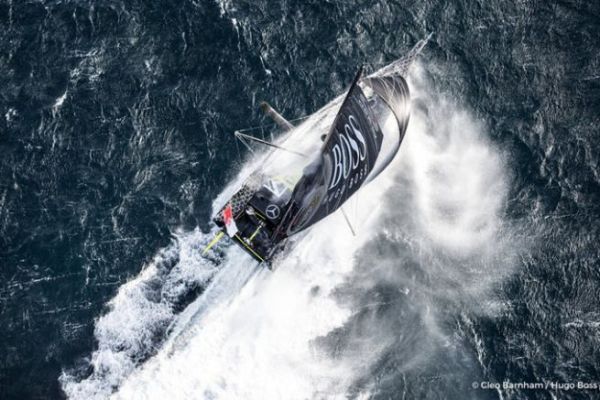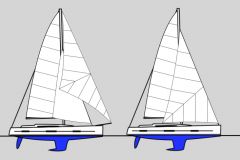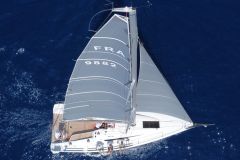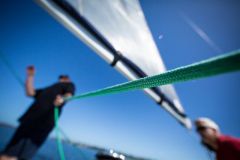The twisting of the mainsail
The incidence of a sail is the angle it forms with the wind. But the wind evolves in strength (+10% at 10 m) and also in direction, depending on its height.
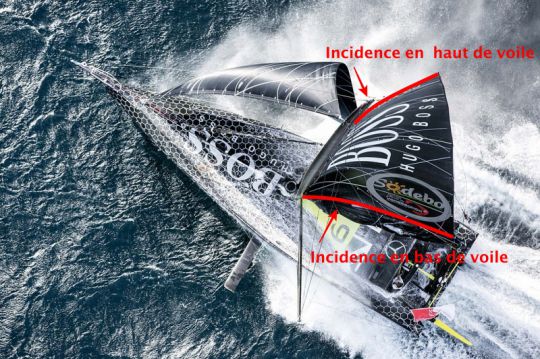
This is why it is necessary to change the incidence of the sail according to height, this is what we call the twisting .
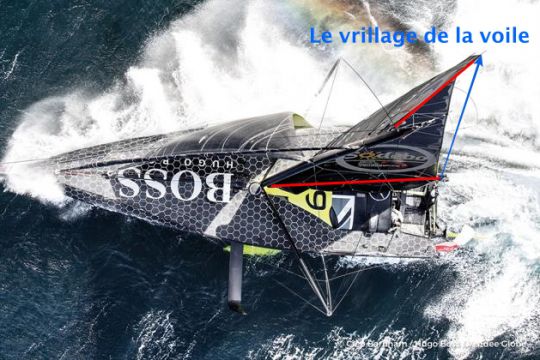
It is mainly the mainsail carriage that regulates the general incidence of the mainsail, while the sheet regulates the twisting of the sail.
At the same pace:
- When you shock the sheet, you twist the sail by opening the fall and vice versa.
- When the trolley is shocked, the incidence is reduced and vice versa.
It is a very fine interdependence game between these two settings that makes it possible to find the balance between good lift and the slightest drag. And perhaps it is the charm of our sport to play at drawing the quintessence from an invisible element.
Learning how to adjust a sail is always empirical even for the most experienced trimmers. To practice it, start by sitting properly at the helm in order to perceive all the sensations. Then tuck your mainsail and trolley in step by step as you watch the speedo. When the speed decreases, it's probably because you've gone a little too far.
Set your mainsail when the wind gets stronger
Here is a small chronological procedure to set up when the wind increases during the day, as is often the case in summer with the thermal breeze .
In this way you will avoid transforming this beautiful navigation into a fight against a boat that sets at every breeze and struggles to sail upwind.
When the wind strengthens and the heel increases:
1- If the crew is downwind, start by inviting them to the wind
2- If the list is still pronounced, use the main halyard and/or Cunningham to bring the trough back near the mast
3- Take the edge back along the boom to erase the hollow at the bottom of the sail
4- Loosen the mainsail carriage to reduce the incidence
5- Loosen the mainsail sheet to increase the twisting
6- If the list is still excessive, take one reef. This is often much better for comfort and performance.
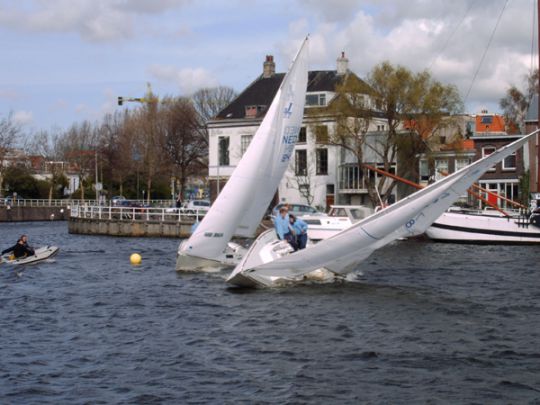

 /
/ 